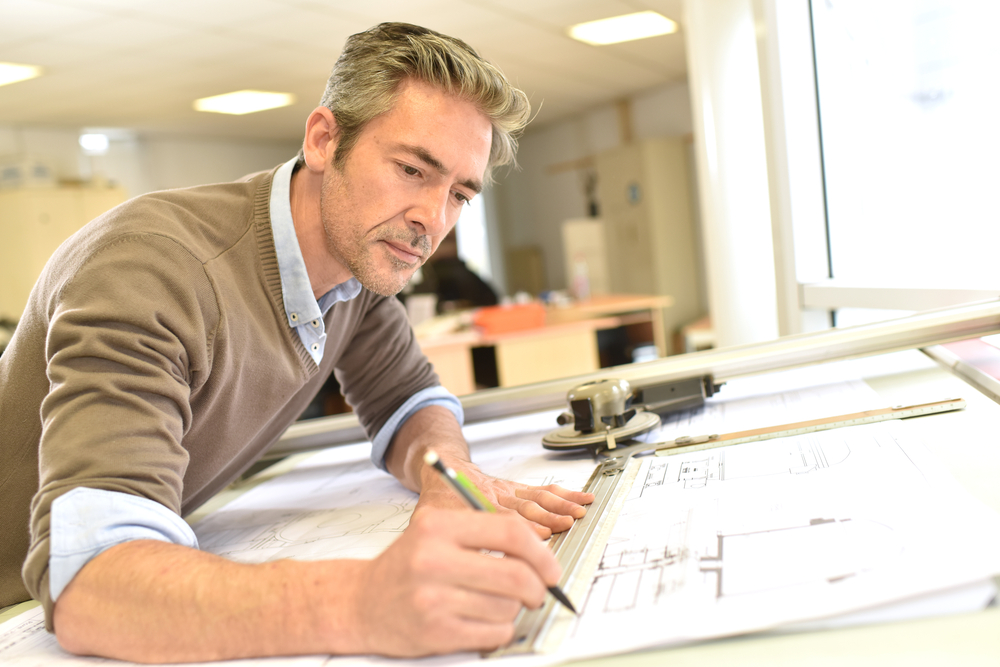Architect Workflow Enhancement for More Efficient Project Delivery
Architect Workflow Enhancement for More Efficient Project Delivery
Blog Article
Understanding the Diverse Profession Paths Available for Aspiring Architect
As an aspiring Architect, you have a world of occupation courses waiting for you. Whether you're drawn to conventional architecture or the subtleties of lasting design, there's a niche that straightens with your rate of interests.
Typical Architecture: Designing Buildings and Frameworks
Standard style concentrates on creating buildings and structures that blend functionality with aesthetic charm. As you discover this area, you'll value the intricate balance in between form and objective. You'll learn to draw inspiration from historical designs, including elements like proportion, products, and craftsmanship. Your layouts can show social heritage, showcasing local customs while satisfying contemporary requirements.
You'll develop skills in drafting, model-making, and site evaluation, enabling you to imagine and interact your ideas efficiently. Engaging with customers, you'll require to recognize their vision and equate it into feasible layouts.
Furthermore, building codes and sustainability techniques are crucial in your job, ensuring your structures are safe and eco pleasant. As you expand in your profession, you'll locate chances in property, business, and even remediation tasks, each offering special obstacles. Accepting traditional style paves the means for a satisfying occupation that pays homage to the past while forming the future.
Urban Planning: Forming Communities and Public Spaces
As an aspiring Architect, you can play a necessary role as a city planner, changing exactly how areas engage and work. By utilizing area involvement approaches, you'll ensure that residents have a voice in shaping their setting. Plus, incorporating sustainable style concepts will certainly assist create areas that not just meet today's requirements however additionally protect the future.
Function of Urban Planners
While several might consider architects as the sole dreamers behind structures, urban organizers play a necessary role fit the wider landscape of communities and public spaces. They evaluate land usage, zoning laws, and neighborhood requires to create sustainable atmospheres that improve lifestyle. By teaming up with various stakeholders, you'll help develop parks, transport systems, and houses that advertise social communication and availability. Urban planners also focus on environmental considerations, guaranteeing that developments integrate eco-friendly areas and assistance biodiversity. Your proficiency in spatial style and area characteristics permits you to picture future development while preserving cultural heritage. In this vital function, you'll directly influence just how people experience their surroundings, making every task a possibility for positive adjustment.
Area Interaction Methods
Efficient neighborhood interaction techniques are vital for city planners to assure that the voices of locals are listened to and valued in the preparation process. To foster purposeful dialogue, you should focus on open forums and workshops where area members can share their ideas and problems. Use studies and social media sites to reach a more comprehensive audience, guaranteeing varied point of views are consisted of. Working together with neighborhood companies can improve depend on and facilitate deeper connections. It is very important to provide clear info concerning decision-making processes and proposed tasks, permitting citizens to really feel informed and equipped. By proactively integrating and paying attention responses, you'll develop spaces that show the area's needs, eventually resulting in even more successful and sustainable urban atmospheres. Welcome openness and continuous dialogue for enduring influence.
Sustainable Design Concepts
When creating metropolitan spaces, including sustainable style principles is crucial for developing atmospheres that thrive both ecologically and socially. Consider incorporating green rooms, like parks and yards, to improve biodiversity and enhance air high quality.
Designing with water preservation in mind is additionally crucial-- consider rainfall gardens and absorptive surfaces to take care of stormwater. Including area participants during the preparation procedure assurances that the rooms you develop satisfy their demands and encourage social communication. By embracing these principles, you'll add to dynamic, lasting urban landscapes that profit everybody.

Landscape Design: Creating Sustainable Outdoor Settings
As you check out landscape style, you'll find vital layout principles that create practical and gorgeous exterior areas. Sustainable techniques play a vital function in guaranteeing these environments flourish while decreasing ecological impact. Plus, you'll locate a variety of profession opportunities that allow you to make an actual difference in just how individuals communicate with nature.
Layout Principles in Landscape
Recognizing design concepts in landscape design is essential for producing sustainable outside settings that balance with nature. You'll require to contemplate aspects like balance, scale, and percentage to guarantee your styles really feel cohesive and inviting. Including native plants not just enhances biodiversity however additionally minimizes water use, making your landscape resilient. Think regarding the flow of area and just how individuals interact with it; pathways and seating locations should invite exploration and relaxation. Furthermore, focus on seasonal modifications, making with products that enhance the surroundings year-round (Architect). By prioritizing sustainability and aesthetic appeals, you can develop outdoor spaces that enrich the community and promote wellness. Accepting these concepts will certainly establish a solid structure for your career in landscape architecture.
Sustainable Practices Review
Lasting practices in landscape design not only concentrate on looks but also focus on ecological wellness and resource preservation. You can make spaces that advertise soil wellness, such as utilizing organic products and exercising permaculture concepts. Inevitably, these practices guarantee your styles profit both people and the environment for years to come.
Profession Opportunities Expedition
With a solid foundation in lasting practices, landscape architecture uses a selection of job paths that enable you to make a purposeful effect on the environment. Urban organizers frequently collaborate with landscape engineers to produce environment-friendly areas in city settings, improving city livability. If you're passionate regarding education and learning, think about becoming a landscape design instructor, motivating future generations.
Sustainable Layout: Focusing on Eco-Friendly Practices
As you discover your job in architecture, accepting green techniques can set you apart in an affordable area. Sustainable style focuses on creating buildings that lessen ecological effect while boosting passenger wellness. By integrating sustainable products, energy-efficient systems, and lasting building techniques, you'll add to a greener future.
Start by acquiring expertise of eco-friendly qualifications like LEED or BREEAM, which can strengthen your qualifications. Consider just how all-natural light, air flow, and thermal effectiveness can optimize style. Collaborate with engineers and ecological professionals to introduce options that minimize waste and conserve resources.
Do not neglect the relevance of area participation-- appealing regional stakeholders can inspire designs that harmonize with the atmosphere. As customers significantly prioritize sustainability, your proficiency in eco-friendly methods will certainly not just draw in tasks however also satisfy your enthusiasm for responsible style. Welcome this critical element of the profession, and view your occupation thrive.
Historical Preservation: Securing and Bring Back Cultural Heritage
While you commence on your architectural trip, consider the essential duty of historical conservation in preserving our social heritage. This area concentrates on the protection and remediation of substantial structures, websites, and frameworks that tell the stories of our past. By participating in historical preservation, you'll assist safeguard the architectural heritage that shapes neighborhood identification.
As a historical preservation Architect, you'll analyze historic relevance and examine the problem of structures. You'll work closely with chroniclers and guardians to assure authentic repair techniques are utilized. This career path enables you to blend creative thinking with research study, enabling you to develop remedies that appreciate initial products and workmanship.
Your work not only read what he said adds to sustainability by recycling existing buildings yet also fosters a sense of satisfaction within areas. Accepting this course will assist you become a guardian of background, protecting the stories and aesthetic appeals that enrich our lives.
Interior Design: Enhancing Indoor Spaces
Historic conservation and interior architecture both share a dedication to boosting the built setting, but they concentrate on various elements. While historic preservation emphasizes maintaining a framework's cultural and historic value, indoor architecture nos in on enhancing interior spaces for capability and appearances.
As an aspiring Architect, you'll find that interior design enables you to blend creative thinking with technical skills. You'll design areas that not only look good however also promote convenience and effectiveness. This field involves understanding how light, shade, and materials connect within an area, influencing state of mind and functionality.
You'll work on different tasks, from residential homes to commercial workplaces, making sure that each setting meets the demands of its occupants. By focusing on individual experience, you can transform interiors into inspiring and functional rooms, making a significant influence on just how people engage with their environments. Welcome the chance to improve interior settings and form the method people live and function.
Industrial Layout: Combining Capability With Aesthetics
Commercial style plays an essential duty in producing products that effortlessly blend looks with capability, making certain that what you make use of everyday is not just aesthetically enticing yet additionally useful. As a hopeful Architect, you might involve yourself in this field, concentrating on developing everything from furnishings to consumer electronics. Your work includes recognizing customer demands, products, and manufacturing procedures, enabling you to develop innovative solutions that boost daily experiences.
In commercial design, you'll typically team up with makers, marketing experts, and engineers, ensuring that your designs are not only lovely but additionally feasible. This occupation path offers a vibrant environment where creative thinking meets usefulness, making it a fulfilling selection for architects interested in forming the products of tomorrow.
Frequently Asked Concerns
What Educational Credentials Do I Need to Come To Be an Architect?
To end up being an architect, you'll require an expert level in architecture, commonly a Bachelor's or Master's. Additionally, you'll need to finish a teaching fellowship and pass the Architect Registration Evaluation to exercise legitimately.
Exist Accreditation Demands for Different Building Job Paths?
Yes, there're accreditation requirements for various building courses. Architect. You'll need to pass exams, full internships, and sometimes go after specialized training, depending upon your chosen emphasis, like landscape style, urban Resources design, or historic preservation
What Software Program Skills Are Important for Engineers Today?

Exactly How Can I Gain Practical Experience While Studying Design?
You can gain useful experience by interning at building companies, taking part in style competitions, volunteering for area projects, or working together with classmates on real-world projects. These opportunities boost your skills and construct useful connections in the market.
What Task Opportunities Exist Outside Typical Style Firms?
You can explore different work possibilities outside conventional architecture companies, like urban planning, interior decoration, landscape architecture, building and construction monitoring, real estate development, or perhaps functions in sustainability consulting. Each offers unique obstacles and benefits.
Whether you're attracted to standard style or the nuances of lasting design, there's a particular niche that aligns with your interests.When try this making city spaces, integrating lasting design principles is important for developing atmospheres that thrive both environmentally and socially.As you explore landscape design, you'll discover essential layout concepts that develop functional and stunning outside spaces.Comprehending design principles in landscape design is necessary for producing lasting outdoor settings that integrate with nature.In industrial layout, you'll frequently work together with engineers, suppliers, and marketers, making sure that your designs are not only beautiful but likewise practical.
Report this page